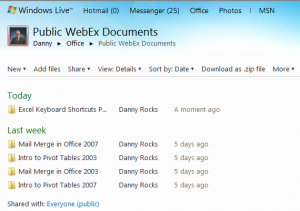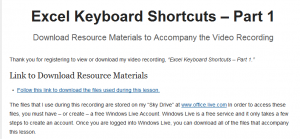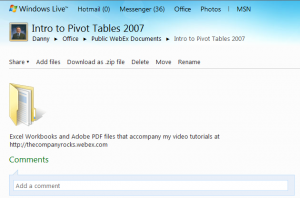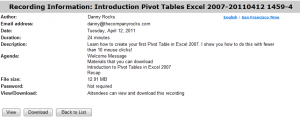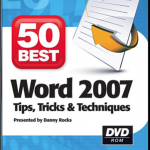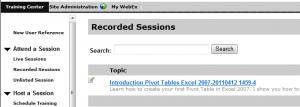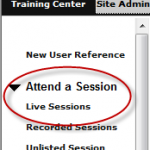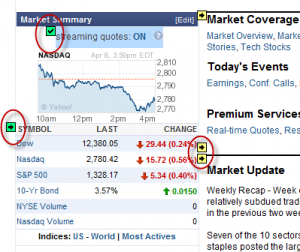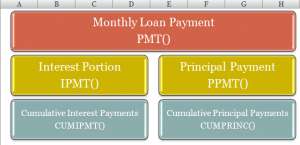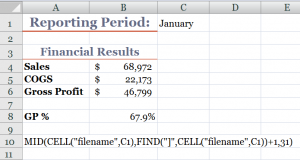I have just published a 50 Minute Video Recording on which I demonstrate the most popular Keyboard Shortcuts for Excel. The great news – for you – is that you can download this video recording for FREE! If you prefer to view this online, you can do so – for FREE!
Download My Excel Workbooks
In addition, I have published the Excel Workbooks, Adobe PDFs and PowerPoint files that I use during this 50 minute video online. You can access them – for FREE!
I store them as “public documents” for you to download on my “Sky Drive” at Windows Live! Here is the direct link:
In order to access these files, you will need a “free” Windows Live account (First Name, Last Name, email address). You can also use your HotMail account to login.
My Extended Length Video Recordings on WebEx
I have recently began to publish “extended length” video recordings at http://thecompanyrocks.webex.com – This 50 Minute video is my 5th recording on the site. I offer it to you “free of charge.” However, you must register (fitst name, last name, email address) with WebEx by Cisco before you can download the recording or view the recording online.
In this format, I can offer “specialized instruction” for Excel Pivot Tables, Macros, Public Speaking Courses, etc. I can also offer instruction in older (Excel 2003) and newer (Excel 2010) programs. In addition, I can create a specialized recording “just for you.” Contact me to learn about how to organize this!
Landing Page for More Information
Rather than repeat what I have already written, here is the link to the special Landing Page that I have created for this 50 minute video recording. On the Landing Page, I have included all of the direct links to the download pages for the video, the Excel files, PowerPoints and Adobe Acrobat documents that I used on this recording.
I invite you to view or download these new resources that I have made available. When you have a chance send me your comments, questions and suggestions for future recordings!
Danny Rocks
The Company Rocks
Watch This Video Lesson in High Definition
Click here to go to my DannyRocksExcels YouTube Channel where you can view this tutorial in High Definition.
 Free Video Recording of Keyboard Shortcuts to Download [ 8:51 ] Play Now | Play in Popup | Download (1317)
Free Video Recording of Keyboard Shortcuts to Download [ 8:51 ] Play Now | Play in Popup | Download (1317)